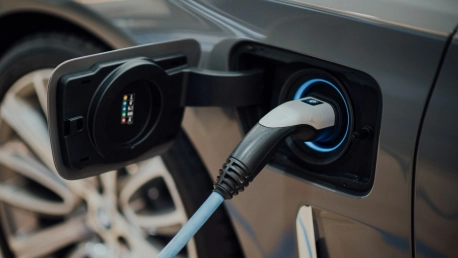The quest for dominance in the electric vehicle (EV) market is reshaping global geopolitics. With environmental sustainability at stake, the US and China are vying for EV supremacy. US policymakers, under President Joe Biden, are grappling with fostering a competitive national EV sector against the backdrop of a globalized supply chain where China already has a strong foothold. In an effort to reduce reliance on Chinese battery components, the Biden administration has proposed subsidies aimed at bolstering domestic production. This move underlines the intricate interplay between trade policies, technological leadership, and national security concerns. As the EV industry becomes a pivotal ground for technological rivalry, decisions made by the US could have far-reaching implications for its position in the global market, as well as its economic and security interests.
The Rise of China’s EV Manufacturing Ecosystem
China’s foray into the electric vehicle segment has been swift and comprehensive. Through robust investments and hefty subsidies, the country has constructed a formidable supply chain empire, extending from the mining of essential minerals to the final assembly of EVs. This systematic approach has positioned China not just as a market leader but as a pivotal cornerstone of the global EV infrastructure. The implications for the US under Biden’s policy directive are profound. Relying on foreign components, particularly from China, clashes with domestic objectives of self-reliance and represents a vulnerability amid escalating tensions between the two economic powerhouses. Yet, severing these established supply lines is a Herculean task, illustrating the sophistication and breadth of China’s imprint on the industry.
Biden’s Subsidy Strategy and Its Practical Implications
President Biden, eying to catalyze a domestic EV revolution, has proposed significant policy shifts. These include slashing subsidies for vehicles composed of battery parts hailing from China’s manufacturing nexus. While the merits of fostering an autonomous supply chain and energizing local manufacturing are clear, the pitfalls are less spoken of. The removal of subsidies may inadvertently elevate production costs and pass them onto consumers, inviting inefficiency and weakening the competitive edge of US-made EVs. The result is a policy paradox: the endeavor to drive down foreign dependencies may undercut the competitiveness required to triumph in the global market. It is a delicate balancing act between economic nationalism and the unavoidable integration of international supply chains.
Mehmet Demirci’s Perspective on Supply Chain Efficiency
Mehmet Demirci, of logistics solutions provider e2open, delineates a nuanced view on this industrial impasse. He expounds that while protectionist policies might offer temporary reprieve, they should be wielded carefully alongside efforts to spur innovation. Without innovation, such policies risk cementing inefficiencies within the economy. Demirci extrapolates this notion to the broader battle over strategic resources and technological dominance, elucidating that an imbalance—manifest in market overcapacities in both China and the US—could skew the competitive landscape. The challenge is substantial, and the response must be multifaceted, defying singular policy adjustments or mere reactionary measures.
Mitigating China’s Manufacturing Overcapacity
Western nations are adjusting their strategies in response to China’s manufacturing dominance. They’re looking to alternative markets to reduce reliance on Chinese imports. Vietnam and Mexico are gaining favor as new sourcing destinations. A notable example is the partnership between Germany’s BMW and Vietnam’s THACO, which symbolizes the shifting landscape of global supply chains. Such shifts are a strategic response to the challenges posed by China’s vast industrial capacity and the need for resilience against potential disruptions, particularly in the fields of electric vehicles and batteries. This strategic realignment reflects Western efforts to decrease dependency and secure more robust supply networks. This trend is indicative of the West’s broader initiative to establish more balance and diversity in trade relationships.
Adapting to New Realities through Innovation and Diversification
The United States and the European Union have recognized the inexorable wave of China’s manufacturing ascendancy. A concerted strategy of diversification bolsters their stance against this economic swell. Local subsidies are but a temporary cushion, and the enduring response lies in relentless technological innovation coupled with a reconfigured supply chain. The push for a fortified trade alliance across the Atlantic reflects an eagerness to sidestep the quagmires of solely domestic-centric policies. As the EV market burgeons, Western countries find themselves needing to leapfrog into a future where cost-effectiveness and efficiency are paramount. This is a future buoyed by advances in technology and a diversified portfolio of international partnerships, enabling a resilient response to global market realignments.









